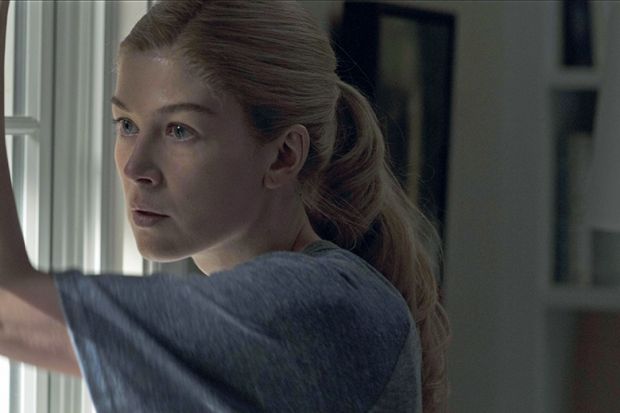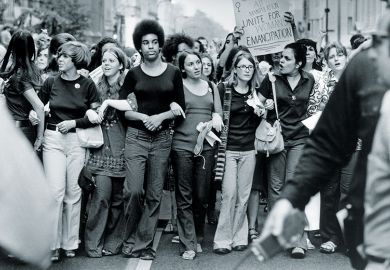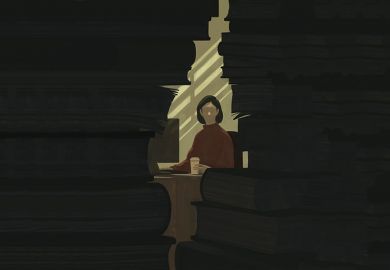You may feel that you’ll foam at the mouth if you see the word “girl” in another book title. Stieg Larsson has a lot to answer for. Not that we can blame him for the current crop of “domestic noir”, as his tattooed protagonist never had to worry about whether hubby was acting bizarrely or whether they were right to move to a very big house in the country. If you have yet to come across domestic noir, let me give you a rather cynical definition of it, from a long-suffering crime fiction reviewer’s point of view: it’s paranoid women, dodgy blokes and brattish kids whose search for the dream life and the wonder house is inevitably derailed by murder.
Laura Joyce and Henry Sutton’s edited collection is subtitled “the new face of 21st century crime fiction”. Julia Crouch, who supplies the foreword, lays claim to the term following a conversation with her publicist over a gin and tonic in 2013. She identifies the necessary elements as family, motherhood, children, marriage, love, sex and betrayal, as well as a subversion of the idea of home as sanctuary. I found myself nodding at Diane Waters and Heather Worthington’s assertion that “domestic noirs offer a study in alienation, and suggest that alienation is a consequence of modern life and the disintegration of community”.
One of the problems with this collection is that domestic noir really isn’t that new. It’s just been adorned with other labels, notably “psychological thriller”. And a scan through the book shows that the contributors know this very well, as chapters trace its history back to Second World War writers such as Vera Caspary, Dorothy B. Hughes and Elisabeth Sanxay Holding, and then on to Patricia Highsmith, who epitomised sinister domestic goings-on. It seems odd, though, that they neglect Celia Fremlin, whose books very much focused on women’s married lives – her thoroughly creepy novel The Hours before Dawn (1958) seems to me to epitomise domestic noir, with the sleep-deprived main character, the children running riot, an oblivious husband and a sinister lodger. There’s a strong argument, too, for including Ruth Rendell/Barbara Vine, as her immaculately understated books often focus on dysfunctional relationships and what happens behind closed doors.
I was intrigued by the passing reference in Joyce’s introduction to Patrick Hamilton’s play Gaslight (1938), made into a film by George Cukor in 1944. This features a conman trying to convince his wife that she’s losing her mind – and is named for the dimming of gaslights in the house. Hence we now have the term “gaslighting”, for when someone is being psychologically manipulated and starts to question their own sanity and feelings. That idea of manipulation appears on a wider scale across domestic noir, particularly where social media are concerned. Alex Lake’s Copycat (2017) features a doctor with a good job and a supposedly happy family life – until she discovers two Facebook pages out there with her name and pictures on.
Gillian Flynn’s Gone Girl (2012) and Paula Hawkins’ The Girl on the Train (2015) sit at the heart of Joyce and Sutton’s collection – and both seem an uncomfortable fit for the domestic noir label. They actually don’t have much in common, apart from the fact they stormed up the mainstream charts and were both made into films. Gone Girl’s Amy is an anti-hero, while girl on the train Rachel is the archetypal unreliable narrator (and didn’t we have one of those in Agatha Christie’s The Murder of Roger Ackroyd back in 1926?). Talking of uncomfortable fits, I’m still faintly bemused by Andrea Hynynen’s chapter on the French author Pierre Lemaitre, which has the weak justification that his books feature central female characters, harmful personal relationships and a growing sense of suspense, leading to sudden plot twists and surprise endings. I think most crime fiction would qualify, in that case.
Publishers worship labels – as, to be fair, do many readers. You don’t want to end up with a cosy mystery starring a cat as the narrator when you were really in search of a blood-and-guts serial killer story. You can guarantee that a blockbuster success will be followed by countless wannabes. Before domestic noir, it was writers vying to produce the next The Da Vinci Code. Trust me, you can definitely have too many thrillers starring a maverick academic and a plucky gal hurtling around Europe in search of an ancient artefact, pursued by religious extremists. Domestic noir is the antithesis of this – micro-thrillers, if you like, set in an unstable world where the individual feels powerless.
In an article in a recent issue of Vanity Fair (28 June 2018), headlined “Gillian Flynn isn’t going to write the kind of women you want”, Flynn and fellow novelist Megan Abbott (whose books are discussed in Joyce and Sutton’s collection) talk about female anger in books and how this feeds into the #MeToo movement. Amy, the central character in Flynn’s Gone Girl, presents a number of personas during the book, not least Cool Amy. She also turns out to be a sociopath who frames her husband for a murder. Many of the female leads across more typical domestic noir are much more pliant.
There’s a conversation to be had about violence porn in crime fiction, which has a nasty tendency to dwell on murdered women. I have a list of writers as long as the M5 whom I wouldn’t touch with a 10-foot battle lance because of it. Wire in the Blood creator Val McDermid, who often requires a strong stomach from her readers, has recently spoken out against a new literary prize that will be awarded to thrillers in which there is no violence against women. She, among others, has pointed out that she uses the genre as a way of critiquing that violence. Emma Miller’s chapter in the collection, on domestic noir and the active turn in feminist crime fiction, does touch on the sexualisation of the corpse, but it’s a topic deserving more space.
Leigh Redhead, herself a crime fiction novelist, mentions the move in the genre away from arse-kicking feminist detectives and plucky teenage action heroes to morally complex characters. She comments that both Flynn’s Sharp Objects (2006) and Abbott’s Dare Me (2012) critique a post-feminist neoliberal cultural landscape. And she adds that the work of feminism is assumed to have been done. She would struggle to find decent examples across the domestic noir field, where feminism appears to have passed the leading female characters by. And I’d dearly like some evidence for Elena Álvarez’s claim that domestic noir “subverts traditional gendered roles and destabilises heteronormative institutions and relationships such as marriage, child rearing, and domestic tasks”. I’d say it does the absolute opposite…
Few of the books that might be categorised as domestic noir build on the traditions that McDermid and other feminist and lesbian writers have created. So we’re talking heteronormative fiction to the nth degree, where the woman has given up her independence, is married to a man, has a tribe of children and seems fixated on the dream house. Those that even slightly push the boundaries feature female narrators who are shown to be unreliable or realise there’s a world outside her socially prescribed life. And I’ll stick with the tag “psychological thriller”, thanks.
Sharon Wheeler is senior lecturer in journalism and PR at the University of the West of England, the author of Feature Writing for Journalists (2009) and co-editor of www.crimereview.co.uk.
Domestic Noir: The New Face of 21st Century Crime Fiction
Edited by Laura Joyce and Henry Sutton
Palgrave Macmillan, 312pp, £88.00
ISBN 9783319693378
Published 23 May 2018
The authors
Laura Joyce, lecturer in creative writing at Coventry University, studied Classics at the University of Manchester, where she went on to an MA in creative writing before moving to the University of Sussex for a PhD in critical theory and creative writing. This examined representations of the dead in fiction and the notion of “redemptive necrophilia”. She has worked at Sussex, Edinburgh Napier University, York St John University and the University of East Anglia, where she was director of the MA in crime fiction.
Issues around death and dying have remained central to Joyce’s critical work, fiction and hybrid forms of writing. She is the author of a crime novel, The Museum of Atheism (2012), and a collection of prose poetry, The Luminol Reels (2014), written from the perspective of marginalised dead women. Her monograph, Luminol Theory (2017), examines images of violent death through the medium of forensic science. She has also researched the nature of death rituals, particularly for those without a secure religious identity.
Henry Sutton, senior lecturer (and director of the MA) in creative writing at the University of East Anglia, trained as a journalist, and is now a successful author of 10 novels. His earliest books, Gorleston (1995) and Bank Holiday Monday (1997), were psychological studies set in his native Norfolk. He later turned to crime fiction in works such as Get Me out of Here (2011) and Time to Win (2017), written under the pseudonym Harry Brett, as well as a story about a struggling crime writer, My Criminal World (2013). Initially a creative writing fellow at UEA, Sutton also served as a writer-in-residence at its summer school before joining the faculty in 2012. He designed an undergraduate module on The Art of Murder and founded the Norwich Crime Writing Festival.
Matthew Reisz
POSTSCRIPT:
Print headline: Desperate housewives
Register to continue
Why register?
- Registration is free and only takes a moment
- Once registered, you can read 3 articles a month
- Sign up for our newsletter
Subscribe
Or subscribe for unlimited access to:
- Unlimited access to news, views, insights & reviews
- Digital editions
- Digital access to THE’s university and college rankings analysis
Already registered or a current subscriber?








